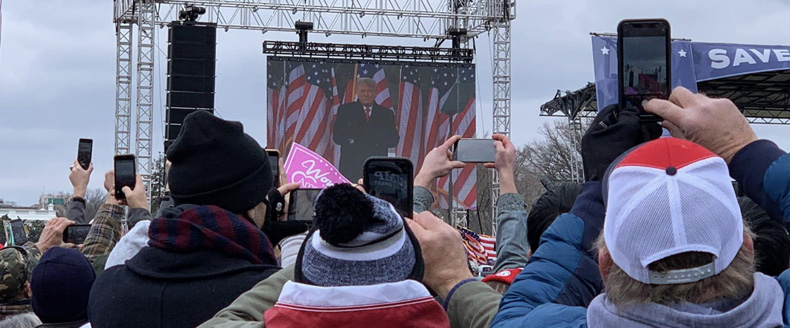No internet, no Capitol riot: It’s that simple.
Mainstream American political organizations assemble crowds, but rarely mobs. Advocacy groups don’t generally turn people against the institutions of government physically, and events like the Wilmington coup or the Brooks Brothers riot stand out because they’re supposed to be rare. Most Americans at least act like they think that collective violence shouldn’t be part of our political culture.
But the internet removed the gatekeepers and the guardrails. The same disintermediation process that killed retail stores also created the opportunity for a new kind of politics, one freed from traditional systems and restraints. As I wrote in 2009,
…the rise of such a participatory public space has completely changed the political media ecology, opening new niches to be exploited in turn by new kinds of organizing entities. Nate’s 21st-century political machines would be a nimble breed, assembling to back a candidate or cause and maintaining influence to the extent that their supporters stay engaged, involved and active. Some campaigns would be ephemeral, others would endure, but in most cases their limiting resource would be time — not necessarily their own, since staff can be bought, but that of individual people willing to donate a piece of their lives to what they see as a greater good.
“Leaderless” movements have thrived around the world, but demagogues can take advantage of this new dynamic as easily as peaceful protesters. Tabloids and TV may have created the myth of Donald Trump, but social media brought his thoughts to our phones. Cable news may have amplified his lies, but Twitter and Facebook spread them in the first place.
This direct connection primed Trump’s followers to act on his behalf, and once he convinced them that their country was being “stolen”, digital media gave them the tools to organize themselves to “save” it. From Facebook Groups to Parler, Gab, 4chan, Twitter and Telegram, technologists and entrepreneurs have created powerful technologies to help us stay in touch. But no matter their builders’ intent, the tools don’t care who uses them or why: Facebook can help you organize a riot just as easily as a happy hour.
It’ll help you amplify it, too. After Trump’s tweets told them where to go and when to arrive, members of Trump’s mob used their digital channels to broadcast their actions on January 6th as well as to coordinate them. Photos and livestreams brought the rest of us into the Capitol in real time, and many of the players were well aware that they were on stage, performing for the folks back home or for Trump himself. Their images and video landed some of them in jail, but they’ll also circulate online for years to come, immortalizing their deeds and inspiring their imitators. We’ll be living with the fallout for as far ahead as I can see.
Donald Trump’s political movement has analog predecessors, of course. George Wallace’s movement to resist racial integration and Ross Perot’s crusade against government spending both married a compelling leader with simmering public resentment, and neither required a single networked device to mobilize millions. But neither also delivered its savior to the White House, or a mob to the halls of Congress.
Donald Trump’s movement is unique in American history — at least, so far. He provided his followers a leader they felt they could believe in, and digital tools provided them a direct line to the darker parts of his mind. And when he felt like they could keep him office in spite of the will of the voters, those same tools brought them to Washington, sent them to the Capitol and beamed their images to the world. No internet, no Capitol riot. The question remains, though: What’s next?
– cpd
Capitol rally photo via Voice of America

